Even with the most attentive care, your indoor rose garden may face a few hurdles. Seeing your beautiful plant show signs of distress can be disheartening, but don’t worry—most common problems are easy to diagnose and treat. Think of these challenges not as failures, but as learning opportunities that will make you a more intuitive and skilled gardener. This guide will serve as your field manual, helping you identify and solve the most frequent issues, from pesky insects to mysterious yellow leaves.
The key to overcoming these problems is early detection and prompt action. We will cover the tell-tale signs of common pests, diseases, and environmental stressors. More importantly, we’ll provide you with a toolkit of simple, effective solutions and preventive strategies to keep your roses healthy, resilient, and blooming beautifully.
Battling the Bugs: Common Indoor Pests
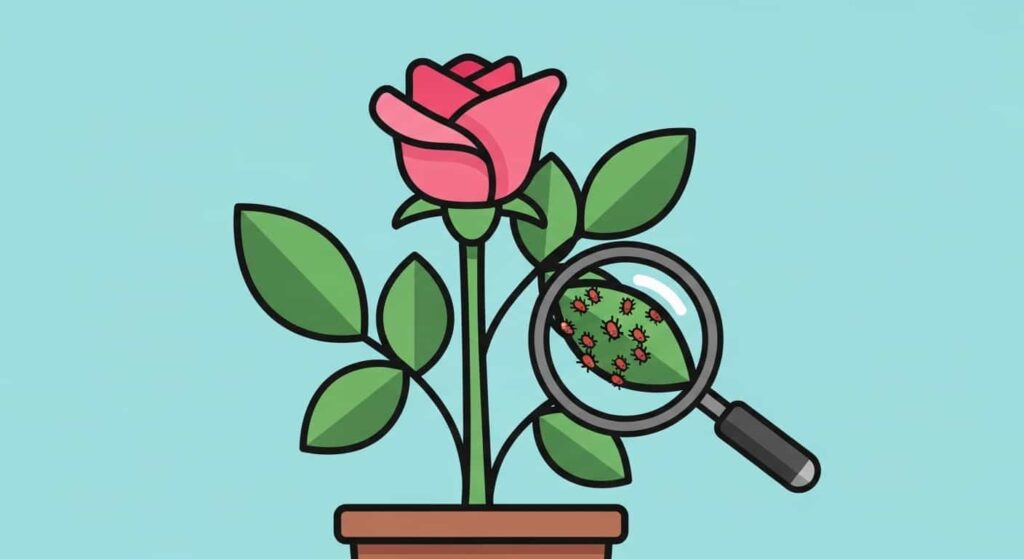
The controlled environment of your home protects your rose from many outdoor pests, but a few tiny invaders can still find their way inside. These are the two most likely culprits you’ll encounter.
Spider Mites: The Invisible Enemy
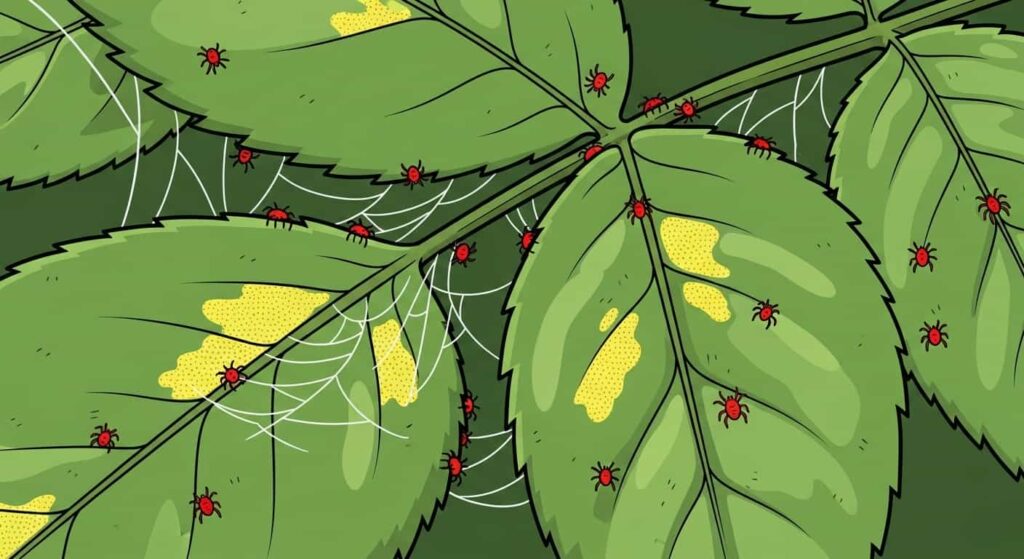
Spider mites are the number one pest of indoor roses. They are incredibly small arachnids, not insects, and are almost impossible to see with the naked eye. They thrive in the warm, dry conditions found in most homes, making them a persistent threat.
- Signs of an Infestation: You are more likely to see the damage before you see the mites themselves. The first clue is often a fine, silky webbing on the undersides of leaves and where the leaves join the stems. The leaves themselves may look stippled, with tiny yellow or white dots, and will eventually take on a faded, bronze, or dusty appearance before turning yellow and dropping off.
- Why They Are a Problem: Spider mites feed by piercing plant cells and sucking out their contents. A large infestation can quickly drain the life from a plant, causing significant leaf loss and severely weakening it.
- Prevention is Key: Spider mites hate humidity. The best way to prevent them is to maintain a higher humidity level (40-50%) around your plant. Using a pebble tray, a humidifier, or grouping plants is your first line of defense.
- Treatment Plan:
- Isolate the Plant: As soon as you suspect spider mites, move the infected plant away from any other houseplants to prevent the mites from spreading.
- Give it a Shower: Take the plant to a sink or shower and use a strong spray of lukewarm water to physically blast the mites off the leaves. Be sure to spray the entire plant, paying special attention to the undersides of the foliage where they congregate. This is often enough to control a minor infestation.
- Use Insecticidal Soap: For more persistent problems, insecticidal soap is an effective and safe treatment. You can buy a pre-mixed solution or make your own by mixing one teaspoon of mild liquid soap (like castile soap, not detergent) into one liter of water. Spray the entire plant thoroughly, again focusing on the leaf undersides. Repeat this treatment every 5-7 days for several weeks to ensure you eliminate all life stages, including newly hatched mites.
Aphids: The New Growth Nuisance
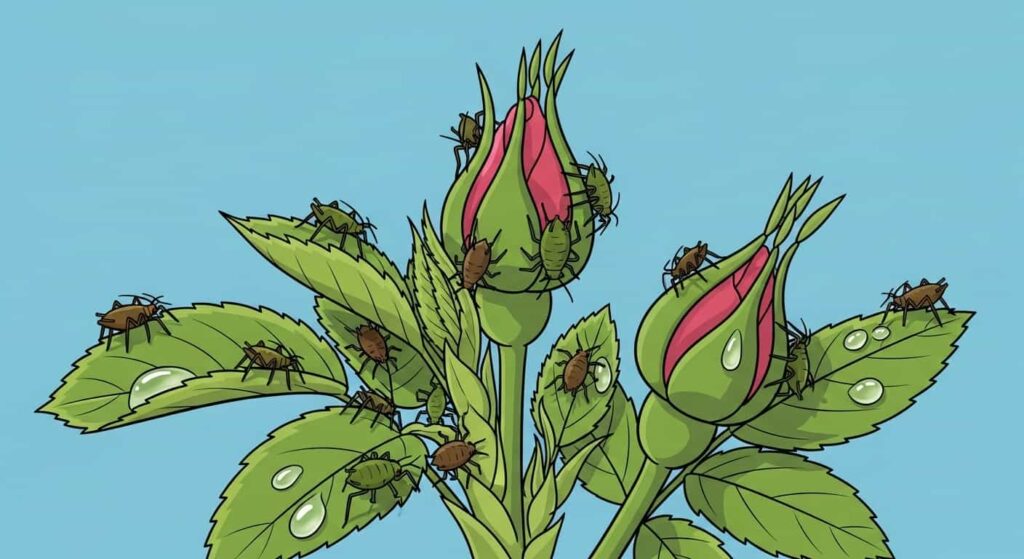
Aphids are small, soft-bodied, pear-shaped insects that can be green, black, pink, or yellow. They are drawn to the most tender parts of the plant and reproduce rapidly, so a small cluster can quickly become a full-blown infestation.
- Signs of an Infestation: Aphids are much easier to spot than spider mites. You will see them clustered on new, succulent growth, flower buds, and the undersides of young leaves. They often leave behind a sticky residue called “honeydew,” which can sometimes lead to the growth of a black, sooty mold.
- Why They Are a Problem: Like mites, aphids feed by sucking sap from the plant, which can cause new growth to be stunted, curled, or distorted. A heavy infestation of flower buds can prevent them from opening properly.
- Treatment Plan: Aphids are relatively easy to control.
- Physical Removal: For a small number of aphids, you can simply wipe them off with your fingers or a damp cloth. A strong jet of water from your sink sprayer will also dislodge them effectively.
- Insecticidal Soap: If the infestation is more widespread, the same insecticidal soap solution used for spider mites will work perfectly on aphids. Spray thoroughly and repeat as necessary.
Dealing with Diseases: Fungal Foes
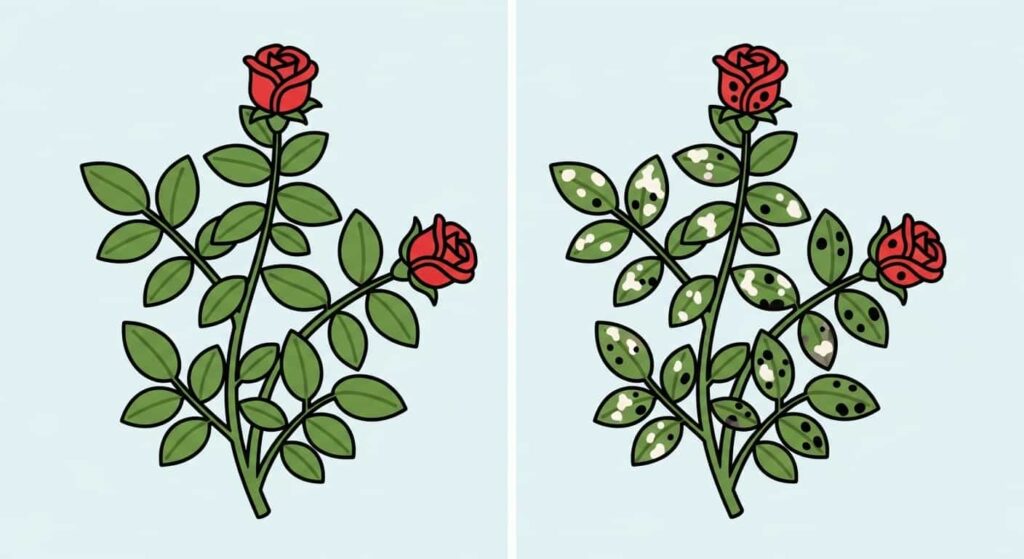
Fungal diseases thrive in conditions of high humidity and poor air circulation. While less common indoors than in the garden, they can still appear if the environment isn’t quite right.
Powdery Mildew: The White Dusting
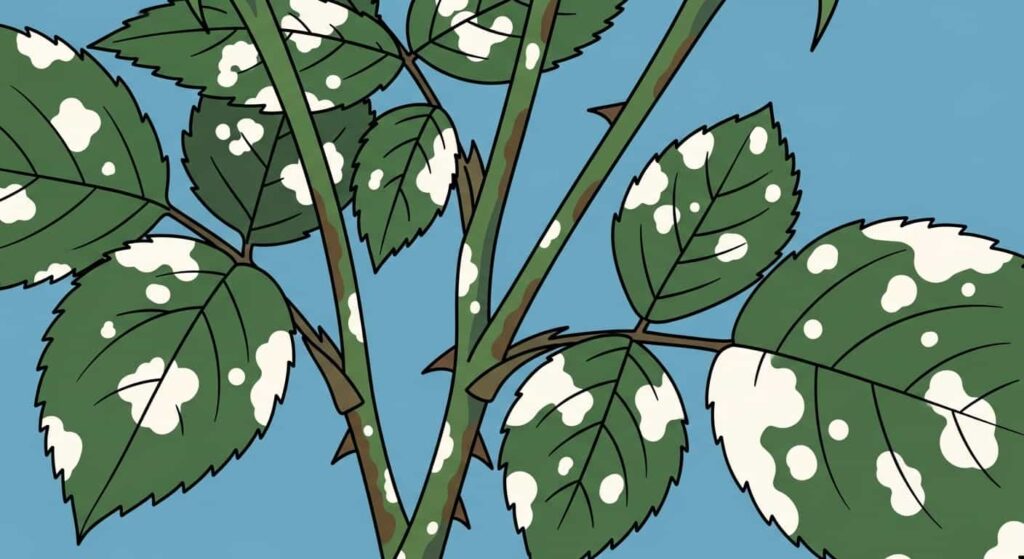
Powdery mildew is one of the most recognizable plant diseases. It’s a fungus that lives on the surface of the plant tissue and is rarely fatal, but it is unsightly and can stress the plant.
- Signs of Disease: It appears as white, powdery patches on leaves, stems, and buds. It looks as if the plant has been dusted with flour. In severe cases, it can cause leaves to yellow and curl.
- Causes: The primary cause is poor air circulation combined with high humidity, which allows fungal spores to settle and germinate on leaf surfaces.
- Prevention and Treatment:
- Improve Air Circulation: This is the most important preventive measure. Use a small oscillating fan for a few hours a day to create a gentle breeze. Avoid crowding plants too closely together.
- Keep Leaves Dry: Water the soil, not the plant. Avoid getting the foliage wet when you water.
- Prune and Remove: Snip off any heavily infected leaves or stems and dispose of them in the trash, not your compost.
- Fungicide Treatment: For persistent cases, a fungicide can be used. Neem oil is an excellent organic option that works as both a fungicide and an insecticide. Follow the product’s instructions for dilution and application.
Black Spot: The Leaf-Dropping Disease
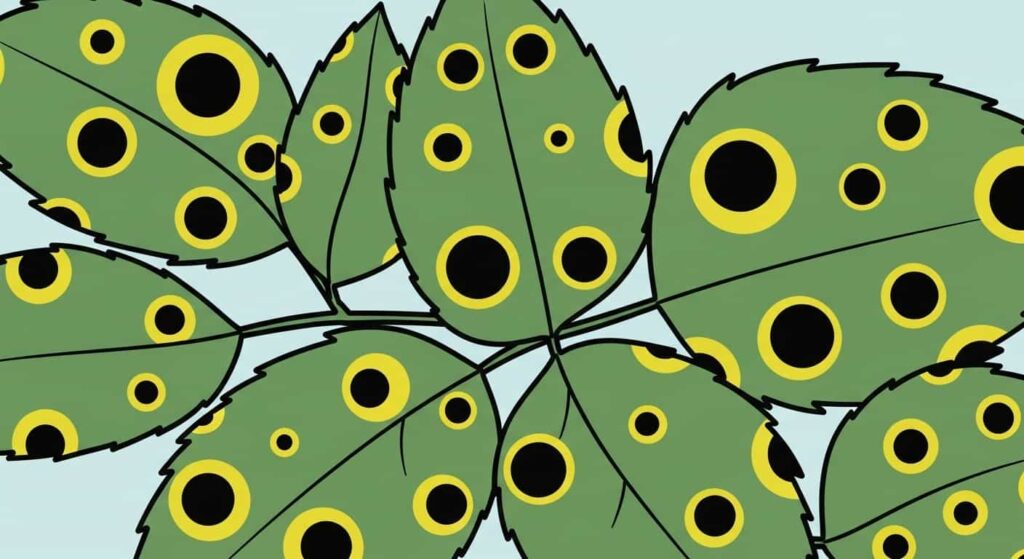
Black spot is another common fungal disease for roses, though it’s less frequent indoors. The spores are spread by splashing water.
- Signs of Disease: As the name suggests, this disease causes black spots with fringed or feathery margins to appear on the upper surfaces of leaves. A yellow halo often forms around the spots, and the entire leaf will eventually turn yellow and fall off.
- Causes: Black spot requires water to thrive. Spores landing on a wet leaf surface can germinate and infect the leaf.
- Prevention and Treatment:
- Sanitation is Crucial: Remove and destroy any infected leaves immediately, both from the plant and any that have fallen onto the soil. The spores can survive on fallen leaves and reinfect the plant.
- Water Carefully: Water at the base of the plant to keep the foliage as dry as possible.
- Promote Airflow: Good air circulation will help leaves dry quickly if they do get wet.
- Use a Fungicide: If the problem persists, treatments like neem oil or a copper-based fungicide can be effective.
Reading the Leaves: Environmental and Watering Issues
Often, a problem isn’t a pest or disease but a symptom of an environmental imbalance. The leaves are your plant’s primary communication tool.
The Mystery of Yellowing Leaves (Chlorosis)
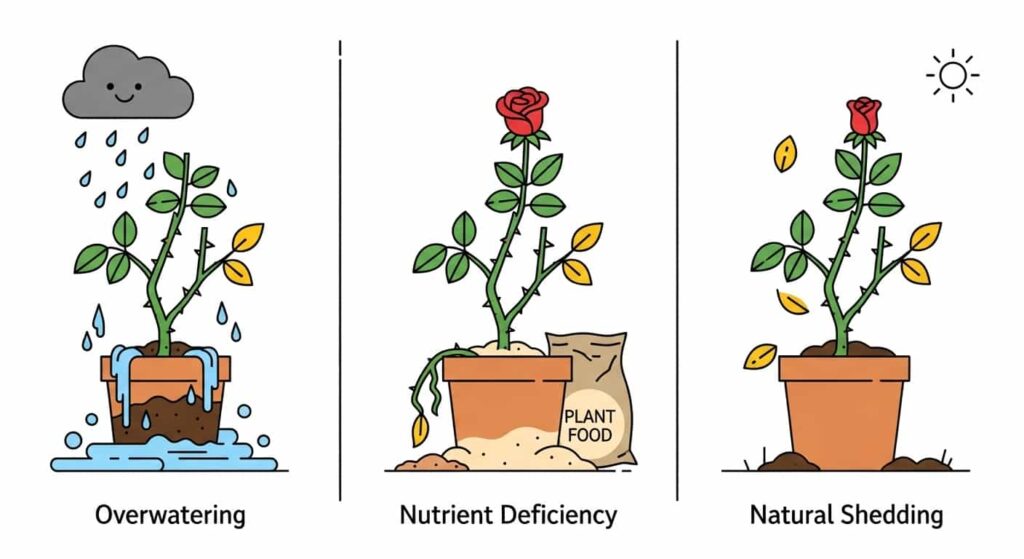
Yellow leaves are one of the most common complaints, and they can signal several different issues. The location of the yellowing can provide clues.
- Cause 1: Overwatering. This is the most likely culprit. If the lower leaves are turning yellow and the soil is consistently damp, you are likely overwatering. The excess water suffocates the roots, preventing them from taking up nutrients.
- Solution: Allow the soil to dry out more between waterings. Use your finger to check the soil moisture one inch deep before adding any more water. Always empty the saucer after watering.
- Cause 2: Nutrient Deficiency. If the new leaves are turning yellow while the older leaves remain green, this could signal an iron deficiency. If the yellowing is more general and the plant hasn’t been fed in a while, it may be a nitrogen deficiency.
- Solution: Fertilize your rose regularly during the growing season with a balanced, water-soluble fertilizer. If you suspect an iron deficiency, a supplement containing chelated iron can help.
- Cause 3: Natural Shedding. It is normal for a plant to occasionally shed its oldest, lowest leaves as it puts energy into new growth. If it’s just one or two leaves at the bottom of the plant and the rest of the rose looks healthy, there is no cause for concern.
Drooping or Wilting Leaves
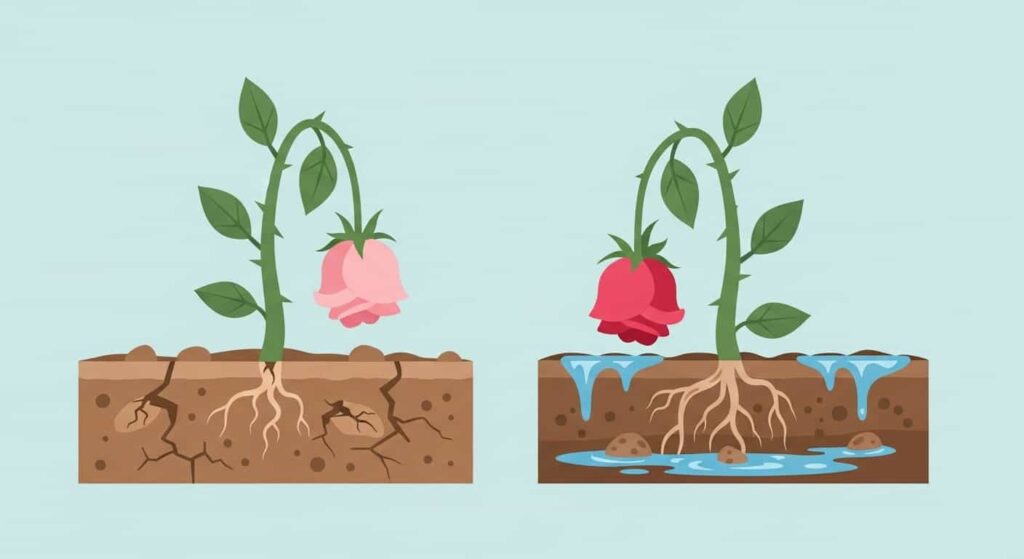
- Cause 1: Underwatering. If the plant is drooping and the soil is bone dry, the answer is simple: your rose is thirsty. The leaves will often feel soft and limp.
- Solution: Water the plant thoroughly until water runs out of the drainage holes. The plant should perk up within a few hours.
- Cause 2: Overwatering. Confusingly, drooping can also be a sign of overwatering. When roots begin to rot, they can no longer absorb water, so the plant wilts as if it were thirsty.
- Solution: Check the soil. If it’s soggy and the plant is wilting, you have a root rot problem. In this case, you may need to repot the plant into fresh, dry soil, trimming away any black, mushy roots in the process.
Leggy Growth and No Flowers
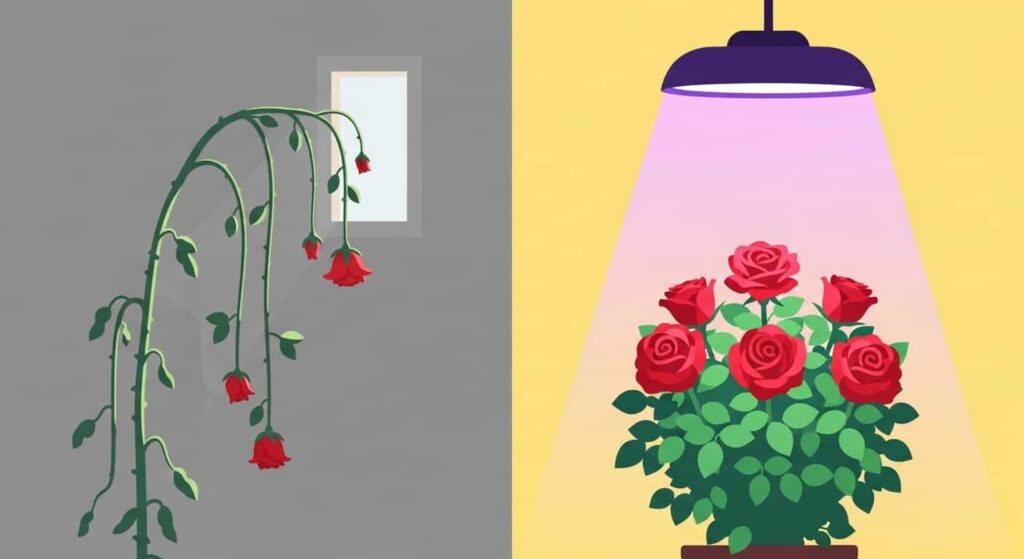
If your plant is producing long, spindly stems with large gaps between the leaves and refuses to bloom, the problem is almost always one thing: insufficient light. The plant is stretching in a desperate search for more light.
- Solution: This has a straightforward fix. Move the plant to a much brighter location, ideally a south-facing window. Better yet, invest in a full-spectrum LED grow light and run it for 14-16 hours a day. You can prune back the “leggy” growth to encourage more compact, bushy stems to form under the new, improved lighting conditions.
By learning to interpret these signs, you can address problems swiftly and effectively. A proactive approach, focused on creating a healthy environment with good airflow, proper humidity, and the right amount of light and water, will prevent most of these challenges from ever arising. View your plant care routine as a partnership, and you’ll be well-equipped to guide your indoor rose to a long and beautiful life.
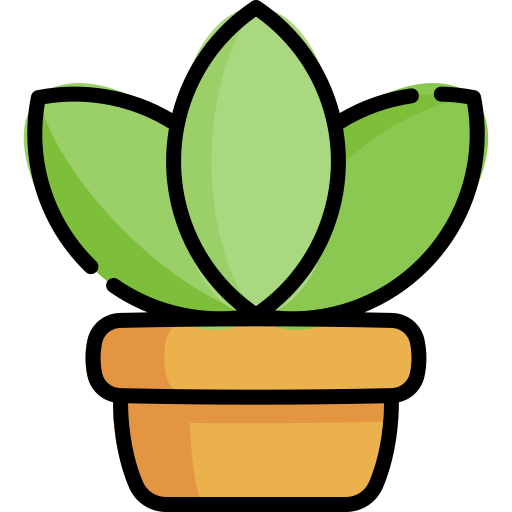
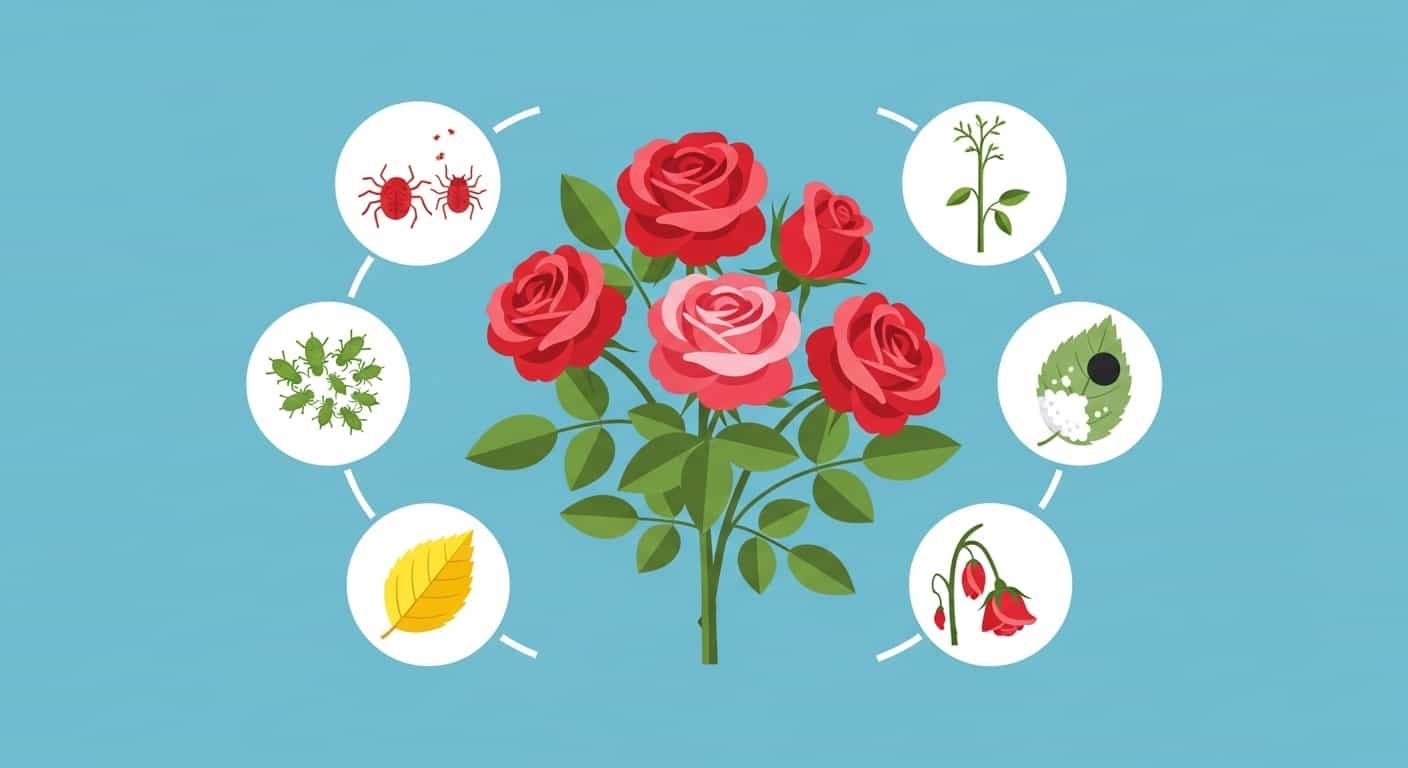
Leave a Reply